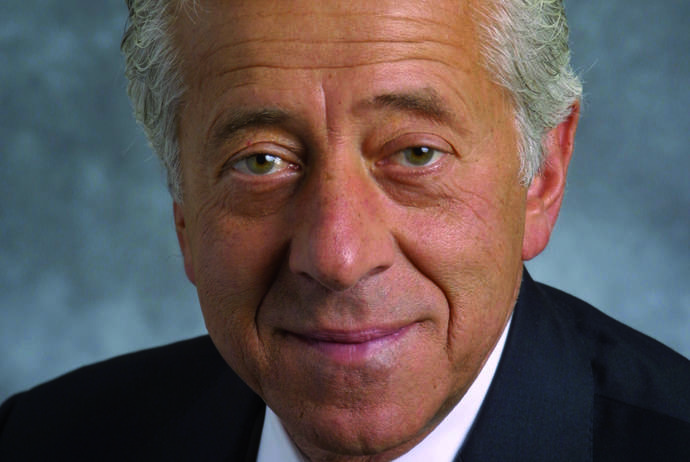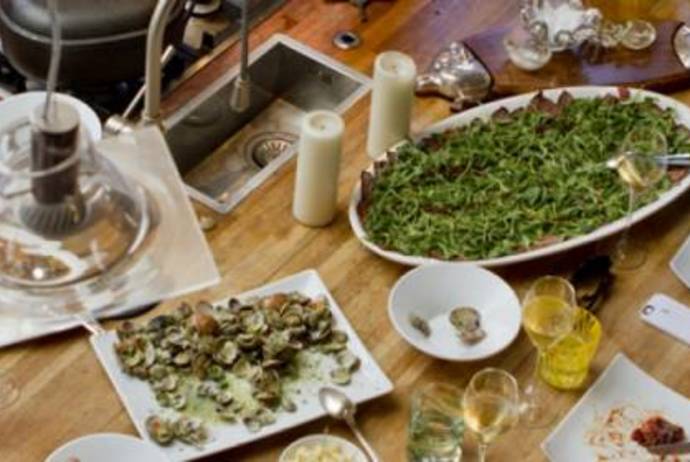Si svolge a Matera, per abbracciare poi virtualmente tutto il mondo, un congresso internazionale intitolato “Emergenza Grano: da strumento di guerra a risorsa di Pace” che festeggia in modo speciale la Giornata Mondiale della Pasta. Lo ha organizzato con il cuore, è proprio il caso di dirlo, ma anche con tutta la competenza e lo studio necessario, il noto chef americano Luigi Diotiaiuti, originario di Lagonegro in Basilicata.
Nel suo noto ristorante di Washington DC Al Tiramisù da anni Luigi Diotaiuti, chef star della televisione americana, è un punto di riferimento per l’alta cucina italiana. Lo frequentano assiduamente star del cinema come George Clooney, Julia Roberts, Harrison Ford, Michael Douglas, Matt Damon e tanti altri.
Hillary Clinton, quando era Segretario di Stato, lo ha voluto nell’American Chef Corps della Casa Bianca e un altro Segretario di Stato, John Kerry, lo ha citato in occasione del suo discorso all’Expo 2015 come uno tra gli chef più apprezzati d’America.
Ma Luigi Diotiaiuti non si è montato la testa, con i piedi fermi per terra, convinto dell’importanza di tramandare gli usi e i costumi della nostra tradizione, ha creato l’organizzazione no-profit Luigi Diotaiuti Onlus
La scelta di Matera per il suo convegno è ovviamente legata alle sue origini lucane ma anche al ruolo strategico che questa città ha assunto, soprattutto negli ultimi anni dopo essere stata capitale della cultura, come luogo di diffusione della cucina mediterranea, ma anche alla sua storia nella produzione del pane. Ci dice Diotiaiuti: “La mia onlus è basata a Matera, una città che per millenni ci ha donato del pane straordinario.
La terra di Matera è votata al grano, il pane di Matera è conosciuto in tutto il mondo. Ha una una storia particolare. La sua forma è quasi come quella di un croissant perchè in antichità Matera non aveva tanto spazio. C’erano i forni centrali dove le famiglie portavano il pane e ogni forma di pane aveva il suo marchio, una sorta di timbro personalizzato per distinguerlo. La classica pagnotta rotonda di due chili poi veniva fatta a forma alzata sempre per fare in modo che occupasse meno spazio. Ne infornavano così 4 al posto di una, con tre tagli nel nome del padre figlio e spirito santo. “
Diotiauti ci racconta cosa c’è alla base della sua decisione di organizzare questo convegno con la sua Onlus “Nasce dal mio continuo desiderio di riqualificare il sud che è stato privato negli anni di tanto. Per esempio parliamo della mia zona: il lagonegrese. Quando ero piccolo e la attraversavo, per andare a scuola, vedevo una terra coltivata ovunque, ora non è più così.
Se mi chiedessero di portarli per un campo di grano non saprei proprio dove andare, eppure noi in Italia mangiamo tre quattro volte al giorno prodotti realizzati con farine: pasta, pizza, pasticcini e quant’altro. La domanda che ci dobbiamo porre quindi è: da dove viene la farina?
Nel 2011 poi ci fu lo scandalo Kamut. L’Unione Europea di allora nel catalogare i vari cereali, i frumenti che potevano dare allergia, mise come frumento il Kamut che è un marchio commerciale, non un grano. Il nome del grano è khoransan o “grano rosso” o “frumento orientale”, un cereale antico che fa parte della famiglia dei Triticum Turgidum. Si chiama Precciasacchi in dialetto siciliano (tanto pesante da sfondare i sacchi), o Settecentanni in varie zone del sud (per dire vecchissimo), l’Etrusco in Toscana, sempre per sottolineare che si coltiva da millenni.
La Kamut International invece è un’azienda, fondata alla fine degli anni ’80, nello stato del Montana da Bob Quinn che fece raccogliere i semi del khoransan e li modificò per venderli in tutto il mondo sotto un nuovo marchio.”
Dunque si tratta di una geniale operazione commerciale! Qualunque agricoltore potrebbe piantare la stessa varietà di grano, ma non potrebbe commercializzarlo con quel nome che nel frattempo lo ha reso famoso e fatto entrare nella grande distribuzione …
Sempre Diotiaiuti: “Dico di più 30 anni fa in Europa venivano donati a piccoli contadini soldi e premi vari per mettere a riposo i loro campi di grano. Questo aveva un motivo nascosto, serviva per concentrare e controllare il prezzo del grano nei grandi Paesi dove veniva prodotto massivamente.
E dopo tanti anni abbiamo visto cosa succede. Basta una nave di traverso nel canale di Suez che si blocca tutto il mondo, Putin che invade l’Ucraina, ed il prezzo del grano va alle stelle.
Cambiamenti climatici e conflitti, politiche sbagliate… Cosa è successo ad un Paese come l'Italia che era il granaio dell’impero romano? Che fino agli anni 50 aveva la pianura Padana considerata granaio d’Europa?
L’Italia fino al 2018 ha importato l’80 per cento di grano che lavora. Ecco io vorrei aprire una breccia su questo problema che poi porta a tanti ragionamenti, incluso quello della fame nel mondo.”
Nel calendario del convegno che si apre da New York con saluto video dell’Ambasciatore Maurizio Massari (Rappresentante Permanente italiano all’ONU, Vice Presidente del Consiglio Economico e Sociale dell’ONU), la partecipazione di Hartwig Schafer (World Bank Vice Pres. South Asian Region, esperto in Povertà, Infrastrutture e Agricoltura rurale nel Mondo), Gary Barrett (Professore Georgetown University), Dino Nicolia, (Funzionario Commissione Europea), Antonio Pessolani (Presidente Coldiretti Basilicata), Andrea Pasini (CAI – Consorzi Agrari d’Italia), Domenico Romaniello (esperto di Grani Antichi), Stefano Uccella (Pres. Nazionale Pastai CNA), Enrico Pirro (fondatore Pastificio Pirro) e Alex Revelli (Prof. di gastrosofia e comunicazione delle culture e politiche alimentari Università S. Raffaele di Roma).
Inaugureranno la la giornata le donne di Pasta Lab che, insieme agli allievi degli Istituti Alberghieri di Matera, Melfi, Marconia, Maratea e Potenza, competeranno con la loro pasta fatta in casa sotto l’occhio esperto dello chef di Linea Verde (Rai1) Peppone.
In palio per i primi due allievi classificati, un viaggio di 10 giorni a Washington, con workshop e visite guidate all’Ambasciata Italiana, al Museo Spaziale e alle residenze di due grandi presidenti americani, quella di George Washington a Mount Vernon e quella di Thomas Jefferson a Monticello, in Virginia.
-----
Tra i sostenitori dell’evento: Città di Matera, Rai Basilicata, Coldiretti Basilicata, A.R.A. Basilicata, NIAF (la più grande Fondazione tra America e Italia), Unione Cuochi Lucani, CAN, Formamente, Lanziani Hub, MaterAmo Cultura del Gusto, Connecting.
------
Per saperne di più:
Articolo "The American Dream of Luigi Diotaiuti" http://www.iitaly.org/node/51936
Intervista video https://www.youtube.com/watch?v=4lsBtr7QDDU&t=468s
Il sito dello chef http://www.luigidiotaiuti.com/
































